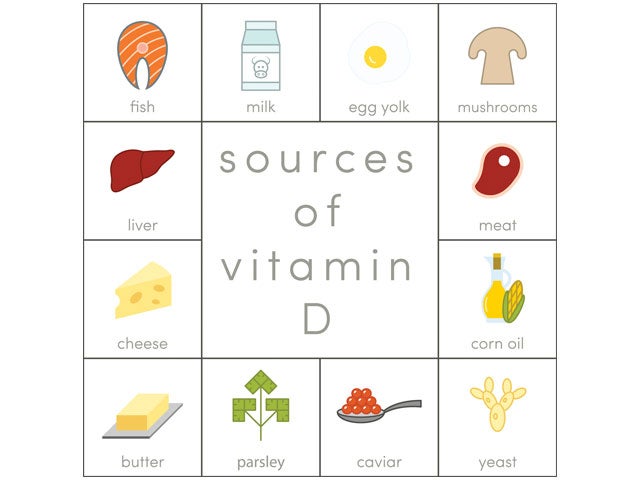Discover what you need to know about vitamin D - what it does, where to get and how much of this essential vitamin is recommended every day.
What is vitamin D?
Vitamin D is a fat-soluble vitamin, meaning it’s soluble in fats, or lipids, rather than water, which means your body’s able to store it.
Unlike other vitamins, vitamin D is also considered a hormone, produced from cholesterol when the skin is exposed to the sun – which is why it’s often referred to as the ‘sunshine vitamin’.
What is it good for?
We know that calcium is a key ingredient for a healthy skeleton. But did you know vitamin D is needed to support the maintenance of strong, healthy bones by regulating blood calcium levels in the blood?
Once metabolised, the active form of vitamin D is essential in stimulating intestinal calcium absorption, and without it, limited dietary calcium and phosphorus are absorbed.
Adequate vitamin D levels are, therefore, essential in reducing the risks of osteoporosis later in life. As well as ensuring children’s bodies are able to absorb and utilize calcium and phosphorus, assisting in their healthy growth and development.
Vitamin D may also play a vital role in immunity by supporting the health and function of the immune system. Studies have shown supplementation of vitamin D during winter months may reduce the occurrence of seasonal cold and flu.

Vitamin D foods include fatty oily fish, egg yolk, or fortified products.
Where do you get it?
Sun exposure
When the UV index is 3 or above, as in summer, adequate vitamin D exposure may only mean spending a few minutes outdoors most days.
During the cooler seasons such as autumn and winter, it may be more like 20 minutes of sun exposure each day.
Healthy Bones Australia has a helpful sunshine map and you can find recommended sun exposure for vitamin D based on location and the season in Australia.
Sun protection is recommended when the UV index is higher than 3, and when spending extended periods of time in the sun. Sunscreen and/or sun protection should be incorporated into your daily routine.
Vitamin D foods
Vitamin D can only be obtained through limited dietary sources and these include fatty, oily fish, egg yolk, or fortified products.
Physical activity helps produce vitamin D and boost its levels, so regular exercise is also important.
How much vitamin D do you need?
An adequate vitamin D intake for children and adults under 50 years of age is 5 micrograms (200 IU). This increases to 10 micrograms (400 IU) between 51 and 70 years and then increases to 15 micrograms (600 IU) for adults over 70 years of age.
Are you at risk of vitamin D deficiency?
Naturally dark-skinned people need more UV exposure to produce adequate vitamin D levels as their skin pigmentation reduces the penetration of UV light.
Other people who may fall into this category include people who avoid sun exposure for various reasons, obesity, infants and babies with vitamin D deficient mothers, and those who take particular medications that interact with the absorption of vitamin D.
Some research suggests that even with adequate sun exposure, vitamin D deficiency can still exist. The most accurate and best way to know if you are deficient is to have a blood test.
Vitamin and mineral supplements should not replace a balanced diet. Vitamins can only be of assistance if the dietary intake is inadequate, and if you believe you may be deficient in vitamin D, always consult your health professional first.
Reviewed by the healthylife Advisory Board September 2021

